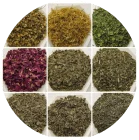Raezofsunlight
New Member
I noticed that her skin on the back of her neck is peeling and I've never seen this happen. I rescued her in town about almost a year ago. So any history is unknown. I took her to the pet store and she's a Russian Tortoise. I know it's common for them to shed little bits at a time but this looks like most of the back of her neck. I'm praying that everyone tells me that she's fine and it looks normal! ? I can try to get a video if the pictures don't show it enough.







